Results 11,981 to 11,990 of 12089
Thread: Anandtech News
-
01-02-24, 05:00 PM #11981
Anandtech: The Corsair iCUE LINK H150i RGB 360mm AIO Cooler Review: Colorful Connecti
When it comes to all-in-one liquid coolers for CPUs, there are a handful of companies whose brands have become synonymous with the titanic coolers. And of those brands, it's Corsair who is inevitably at the top of any list. One of the key manufacturers responsible for popularizing AIO coolers with the enthusiast PC community, the company has built a very successful and well-renowned business segment out of providing maintenance-free AIO cooler designs – a history that at this point spans over 20 years.
With such a long history, we've seen Corsair update their cooler designs several times now, continually iterating on their designs to improve performance, increase reliability, or even just add RGB lighting to match modern styles. Most recently, Corsair introduced their iCUE LINK family of coolers, which incorporate the titular iCUE LINK system that allows for multiple Corsair peripherals to be connected together and controlled via a central hub. Besides simplifying the process of using multiple Corsair devices together, the iCUE LINK system is also designed to cut down on cable clutter by reducing the overall number of cables down to just one: the iCUE LINK cable going to the next-nearest Corsair device.
To that end, today we're taking a look at the latest generation of Corsair's popular H150i cooler, the iCUE LINK H150i RGB. Succeeding the well-received Elite Capellix models, the newest iCUE LINK H150i RGB stands out with its integration into the iCUE ecosystem, while building and improving upon the already solid foundation of the basic H150i cooler design. While the H150i is not technically Corsair's flagship cooler – that honor goes to the massive 420mm H170i series – most cases cannot accommodate coolers larger than the 360mm H150i, making it the most visible of Corsair's increasingly colorful coolers.
More...
-
01-03-24, 07:56 AM #11982
Anandtech: LaCie Rugged Mini SSD Review: Power-Efficient Flash Storage at 20 Gbps
LaCie's portable storage drives have enjoyed a fan following, particularly among creative professionals valuing both performance and product design / appearance. After Seagate's acquisition, the brand has continued to cater to this segment with new products. The company has both USB 3.2 Gen 2 and Thunderbolt 3 SSDs under the LaCie brand, and is adding a new 2 GBps-class Rugged Mini SSD today.
The USB 3.2 Gen 2x2 (20 Gbps) ecosystem has been gaining traction recently after the launch of a number of low-cost portable SSDs based on native controllers. The new LaCie Rugged Mini SSD belongs to the same category, albeit with a slight premium for the product design. The PSSD is available in four capacities - 500GB, 1TB, 2TB, and 4TB. The company sampled the 2TB version to put through our direct-attached storage test suite.
Read on for a comprehensive look at the performance profile and value proposition of the LaCie Rugged Mini SSD, with a particular focus on how Seagate differentiates the product from others using the same NAND / UFD controller combination.
More...
-
01-03-24, 07:44 PM #11983
Anandtech: Rambus Preps Updated RCD for Server-Grade DDR5-7200 Modules
Rambus has introduced its fourth-generation registering clock driver (RCD) chip for server-grade DDR5 memory modules. The updated RCD chip brings support for higher clockspeeds on DDR5 RDIMMs, allowing for future RDIMMs to run as fast as DDR5-7200, a step ahead of their current third-generation/DDR5-6400 RCD. Faster DDR5 RDIMMs will eventually go hand-in-hand with upcoming server platforms, with AMD, Intel, and others all eyeing significantly higher memory speeds for their next round of products.
An RCD functions as a buffer between the memory controller and DRAM chips in RDIMMs, redistributing command and address signals across the module – and making up the "Registered" in "Registered DIMM". This enhances signal integrity and enables more memory devices to be connected to a single DRAM channel. To work properly. the RCD must support a specific data transfer rate, so the new RCD buffer from Rambus will enable memory vendors to build server-grade DDR5-7200 modules.

In addition to performing regular functions of RCD, the new Rambus chip also packs a serial presence detect (SPD) hub and temperature sensors, which are vital for DDR5 memory sticks on general and DDR5 datacenter memory modules in particular. Such functionality somewhat reduces costs of datacenter-grade DRAM sticks, though the costs of such devices are depend on the number of memory devices rather than by tiny chips like SPDs and temperature sensors.
RCDs are crucial for contemporary server-grade memory modules, as these devices can only reach their full memory capacity with registered DIMMs. Rambus is the first company to officially introduce DDR5 RCDs that support a 7200 MT/s data transfer rate, which will be useful for next-generation server platforms.
According to Rambus, their latest RCD chip is now shipping. Though given the long lead times in servers and server parts due to validation requirements, it's likely still some time off before it starts appearing in commercial servers and DIMMs.
More...
-
01-03-24, 07:44 PM #11984
Anandtech: VESA Updates Adaptive-Sync Display Spec to 1.1a, Adds Dual-Mode and Overcl
Ahead of next week’s CES 2024 trade show, this morning VESA is releasing an update to their Adaptive-Sync Display variable refresh certification standard to accommodate some forthcoming “dual-mode” gaming displays. Under the new Adaptive-Sync Display 1.1a standard, display manufacturers will now be able to certify displays that have multiple resolution-dependent maximum refresh rates – chiefly, those displays offering high refresh rates at high-DPI resolutions such as 4K, and even higher refresh rates at 1080p and the like. The 1.1a version of the standard is also being updated to support displays with overclocked modes, allowing display manufacturers to get those modes separately certified on top of their default modes.
Displays offering higher maximum refresh rates at lower resolutions are not strictly a new innovation in the space, but PC enthusiasts are likely to be more familiar with the concept with 4K TVs. Constrained by the available cable bandwidth of the time, HDMI 2.0-era sets such as LG’s C8 OLEDs could offer either 60Hz support at 4K, or 120Hz support at 1080p. And while the concept has fallen by the wayside a bit since the arrival of HDMI 2.1, it has not gone away entirely. Now, as we go into 2024, VESA and its display manufacturing members are preparing to launch a new generation of PC gaming displays that employ the dual-mode concept to allow for even higher refresh rates at lower resolutions.
To that end, the Adaptive-Sync Display standard is being updated to include certification testing criteria and branding to explicitly support and promote these dual-mode displays. According to VESA, the testing criteria itself hasn’t changed – in fact, for existing 1.1-certified monitors, everything is identical – but rather the specification is laying out how manufacturers can get both modes certified. In other words, manufacturers will be able to get their wares validated as meeting the Adaptive-Sync Display standard’s variable refresh performance requirements in both high-resolution and high-refresh modes.
To go with this new certification program, the Adaptive-Sync Display logo program has also been updated to reflect these results. Certified dual-mode displays will list both modes they’re certified for, with the logo to include the refresh rate and the resolution.
In VESA’s example, their fictitious product is a 4K display that offers a 144Hz maximum refresh rate at 4K, and 280Hz at 1080p. For vendors that do choose to seek dual-mode certification, VESA is requiring that the high-resolution mode support a maximum refresh rate of at least 144Hz, while the high-refresh mode’s resolution not be any lower than 1080. The net result is that the new dual-mode specification is primarily geared towards 4K monitors since it’s a multiple of 1080p, but it’s not exclusively baked into the spec. Otherwise, displays will need to support all of the feature requirements of Adaptive-Sync Display, including flicker-free operation and fast G2G transition times.
Meanwhile, reading between the lines on VESA’s press release ahead of CES, it would appear that the addition of dual-mode certification to the Adaptive-Sync Display standard – and indeed the creation of the displays themselves – is being driven by the same bottleneck that lead to dual-mode TVs in the last decade: display cable and processor bandwidth limitations. While DisplayPort 2.1 is already the fastest display cable standard around, with UHBR 20 mode offering almost 80Gbps of bandwidth, few source devices offer that much bandwidth. AMD restricts UHBR 20 mode support to its Radeon Pro cards, and NVIDIA’s current-generation Ada Lovelace (RTX 40 series) hardware doesn’t support DisplayPort 2.x at all. So while forthcoming 4K displays can refresh at upwards of 480Hz, the bandwidth to do so at 4K isn’t consistently there.
The end result is that, depending on whether you’re a glass half-full or half-empty kind of person, high-end gaming displays are either being given the opportunity to increase their refresh rates at low resolutions, or they’re having to cap their refresh rates at high resolutions. Either way, without the bandwidth necessary to drive 4K at 480Hz and similarly high resolutions, display vendors are needing to separate maximum refresh rates by resolution to accommodate what contemporary hardware can actually provide.
Meanwhile, although the VESA consortium itself doesn’t announce any products, but both LG and ASUS have been teasing dual-mode gaming displays in the last couple of months, which in turn we’re expecting to see in greater detail at CES. LG has the forthcoming LG 32GS95UE, which is pictured at the top of this article and offers a 32-inch 4K WOLED display with maximum refresh rates of 4K@240Hz and 1080p@480Hz. ASUS, in turn, will be using that panel for their ROG Swift PG32UCDP, offering the same 4K@240Hz and 1080p@480Hz modes. We’ll likely see more displays from more manufacturers in due time, but given the popularity of their OLED displays, LG alone is enough to move the gaming market.
Moving on, the Adaptive-Sync Display 1.1a specification is also adding support for what the group classifies as “overclocked” displays – that is, monitors offering a faster mode that is not enabled by default in the out-of-the-box factory configuration. Under the updated spec, OEMs who offer monitors with overclocking modes will be allowed to pursue a higher Adaptive-Sync Display certification level (i.e. a higher logo’d refresh rate), so long as they can pass the standard’s requirements in both factory and overclocked modes. Notably, the VESA is also requiring that overclocked displays “must support Adaptive-Sync-enabled GPUs in a non-proprietary manner”, which seems intended to shortcut any G-Sync-exclusive shenanigans.
At this time we aren’t immediately aware of any forthcoming monitors that would rely on the new overlcocking rules. But given the market-driven nature of VESA’s standards, we’d assume such displays are right around the corner, just like dual-mode gaming displays.
Regardless, expect to hear more from the CES show floor next week as manufacturers begin talking about their next generation of gaming displays.
More...
-
01-04-24, 02:23 PM #11985
Anandtech: AMD Unveils XA Versal AI Edge and Ryzen Embedded V2000A For Automotive
With CES 2024 fast approaching, AMD has announced two new products designed to enhance user's experience in the automotive sphere. The first is the XA Versal AI Edge series, their first 7 nm device to be automotive qualified, with a new AI engine and vector processor array designed to drive safety and improve LiDAR, radar, and cameras, all while driving more AI inferencing within a vehicle.
The second is the AMD Ryzen Embedded V2000A series of processors, designed to deliver a paradigm shift in digital cockpits, enhance driver experience, improve in-car entertainment, and have higher levels of media focused performance. Both AMD's XA Versal AI Edge and the Ryzen Embedded V2000A series promise to deliver a much more enhanced user experience, whether that be drivers reliant on digital and AI-assisted safety features as well as passenger entertainment as we go into what is set to be a pivotal year for AI.
AMD XA Versal AI Edge: Scalable From Edge to Accelerators
Perhaps one of the most significant talking points within the industry, and outside of it, is AI and how it looks to transform how we do things. While machine learning and generative AI are two main topics, how we use AI and how companies adopt it into their software and designs are critical as we head into 2024. AI isn't just about making things better; it's a tool that brings many benefits through things such as generative AI. Within the PC industry, both Intel (Meteor Lake) and AMD (Ryzen AI) bring on-chip inferencing to the PC market; AMD is bringing a more robust approach to the automotive industry, specifically within digital cockpits of new vehicles for those on the go with XA Versal AI Edge.
At the core of the AMD XA Versal AI Edge series lies AMD's first 7 nm device to achieve automotive qualification. This milestone underscores AMD's commitment to innovation and ensures that the series meets the stringent standards required by automotive applications. The significance of this comes through the ability of the XA Versal AI Edge series to seamlessly integrate into modern vehicles' ever-growing and complex ecosystem. The XA Versal AI Edge chip comes through AMD's acquisition of Xilinx in 2022, bringing many advancements to AMD's portfolio, including their client-focused Ryzen AI engine block within the latest Ryzen 8040 series of mobile processors.
With XA Versal AI comes a new vector processor array specifically designed to drive more comprehensive automotive safety features to the market. By improving the functionality and efficiency of crucial components such as LiDAR, radar, and cameras, the XA Versal AI Edge series enhances precision and responsiveness to vehicle systems. This is particularly vital in AI inferencing within a vehicle, where split-second decisions based on accurate sensor data can differentiate between safety and what could be an absolute disaster, such as a crash or collision.
The XA Versal AI Edge series has improved AI inferencing capabilities and is designed to boost the vehicle's ability to navigate and interact with its surroundings. This helps pave the way for more advanced autonomous driving features, with lower real-time processing and lower latencies providing benefits while driving. By processing vast amounts of data in real-time, the XA Versal AI Edge chips enable a more responsive interaction between the vehicle and the driver. This translates to a faster and more secure ecosystem, which enhances both the driver's and passengers' confidence in the vehicle's capabilities.
One advantage of AMD's XA Versal AI Edge solutions is their scalability, with their lead model, the XAVE2602, combining 152 AI Engine tiles with 820k logic cells, as well as 984 Digital Signal Processors (DSP), with AMD claiming up to 89 TOPS of INT8 performance across the AI engine, the DSP and Programmable Logic. There are options ranging from 5 TOPS to 171 TOPS, with seven options for different devices and markets. At the heart of AMD's XA Versal AI Edge chips are a dual-core Arm Cortex A72 APU and a dual-core Arm Cortex R5F RPT unit, which range from 6-9 W (XAVE2002) up to a potent 75 W (XAVE2802) estimated power usage. It's worth highlighting that all of AMD's TOPS figures for their XA Versal AI Edge chips are estimated by AMD engineers and aren't verified externally.
Having a varied level of scalability from the same Arm Cortex Dual-Dual core pairing allows AMD to accommodate varying levels of devices, from LiDAR sensors to radar and regular cameras. It also means AMD only needs one design that scales with the same tooling, software, and general ecosystem so that manufacturers using these Versal AI Edge chips can select the one that suits their performance needs. Another element to consider is that as devices scale into better designs, their iterations are on the same platform, meaning a new product design can be created using the same overall ecosystem.
Ryzen Embedded V2000A: 7 nm with Zen 2 Cores
Moving to the second of AMD's automotive-related announcements for CES 2024 is the Ryzen Embedded V2000A series. This new line of processors is designed to initiate the emergence of AI within the digital automotive cockpit. Designed to meet the evolving needs of both drivers and passengers, AMD has designed the V2000A series to deliver higher performance, enhancing multiple aspects of the in-car experience. Ryzen Embedded V2000 is not a mere incremental upgrade but represents a shift in how users can interact with and use vehicle entertainment and infotainment systems.
Replacing the previous Zen-based 4C/8T V1000 APU, the new Ryzen Embedded V2000A series is designed to handle the complex requirements of advanced driver interfaces and in-car entertainment systems. The results in improved graphics quality and a faster response to user inputs, leading to a smoother interaction with the vehicle's systems. For drivers, this means more intuitive control panels and heads-up displays and enhancing access to critical information and controls with minimal distractions. Passengers also benefit, with the series supporting high-definition streaming and gaming experiences, elevating the overall in-car entertainment experience to levels similar to home or mobile platforms.
The Ryzen Embedded V2000A series is built on the 7 nm manufacturing process and, as a result, uses Zen 2 cores combined with AMD's Radeon Vega 7 graphics. Featuring up to 6C/12T with Zen 2 cores, with 7 CUs of Radeon Vega graphics, the Ryzen Embedded V2000A has support for up to four 4K displays, with dual Gigabit Ethernet, and is AEC-Q100 automotive qualified. Looking ahead to the next generation of automotive silicon and with AI as a key selling point, Ryzen Embedded V2000A has a planned availability of 10 years, which ensures companies and automotive partners adopting V200A into their vehicles are guaranteed availability.
Some of AMD's partners onboard with XA Versal AI and Ryzen Embedded V2000A include notable electric car maker Tesla, with Ecarx, Luxoft, BlackBerry/QNX, Xylon, and Cognata also looking to implement these new chips into their automotive products.
AMD states that the first device, the XAVE1752, will be available in early 2024, with the remaining devices coming to market before the end of 2024. AMD also notes that the AXVEK 280 Evaluation Kit is now available to partners and manufacturers. AMD will demonstrate their XA Versal AI Edge at their booth, among other automotive solutions, at CES 2024. For reference, the AMD booth is located at the Las Vegas Convention Center (LVCC) within the West Hall at #W319.
Gallery: AMD XA Versal AI Edge and Ryzen Embedded V2000A Slide Deck





More...
-
01-04-24, 02:23 PM #11986
Anandtech: Samsung Intros 2024 Odyssey OLED Gaming Monitors: Up to 49-Inches and 360H
Ahead of CES, Samsung has introduced a new lineup of Odyssey OLED monitors aimed at the gaming market. The Odyssey OLED family all carry AMD's FreeSync Premium Pro certification for HDR and variable refresh rate support, with a maximum refresh rate of 240Hz or 360Hz depending on the specific model. The lineup includes the curved 49-inch Odyssey OLED G9 model, the flat 32-inch Odyssey OLED G8, and the flat 27-inch Odyssey OLED G6. All three displays are based on Samsung's quantum dot OLED (QD-OLED) panel type.
The 49-inch curved Odyssey OLED G9 (G95SD model) is Samsung's flagship OLED monitor for gamers. The product boasts with a screen curvature of 1800R, 32:9 aspect ratio with a resolution of 5120x1440, as well as a variable refresh rate of up to 240 Hz. Since the display uses an OLED panel, it also features a 0.03 ms response time as well as an ultra-high contrast ratio (think of 1,000,000:1).
The other two Odyssey OLED monitors are aimed at more traditional gamers that look for a flat display. The 32-inch Odyssey OLED G8 (G80SD model) features a 3840x2160 resolution, an up to 240 Hz refresh rate, and a 0.03 ms response time, whereas the 27-inch Odyssey OLED G6 (G60SD model) offers a 2560x1440 resolution, a 360 Hz peak refresh rate, and a 0.03 ms response time.
While Samsung has not touched upon maximum brightness of its new OLED displays, they all carry VESA's DisplayHDR True Black 400 certification, so expect them to support HDR10/HDR10+ as well as at least 400 nits maximum luminance in HDR mode. Also, since they carry AMD's FreeSync Premium Pro badge, they can also enable low-latency HDR gaming as Radeon hardware and software will do tone mapping themselves bypassing built-in scaler.
The latest trio of Samsung's Odyssey OLED monitors offers extensive physical connectivity options, including a DisplayPort 1.4 input, two HDMI 2.1 ports, and a USB hub. The G80SD and the G60SD models also come with a height-adjustable stand that provides added flexibility with tilt, swivel, and pivot control points and all three feature a VESA mount.2024 Samsung Odyssey OLED Monitors G9 (G95SD) G8 (G80SD) G6 (G60SD) Panel 49" QD-OLED 32" QD-OLED 27" QD-OLED Native Resolution 5120 × 1440 3840 × 2160 2560 × 1440 Maximum Refresh Rate 240 Hz 240 Hz 360 Hz Response Time 0.03 ms (GtG) 0.03 ms (GtG) 0.03 ms (GtG) Brightness minimum: ? cd/m²
typical: ? cd/m²
maximum: at least 400 cd/m²minimum: ? cd/m²
typical: ? cd/m²
maximum: at least 400 cd/m²minimum: ? cd/m²
typical: ? cd/m²
maximum: at least 400 cd/m²Contrast 1,000,000:1 Viewing Angles 178°/178° horizontal/vertical Pixel Pitch 0.234 mm² 0.1845 mm² 0.234 mm² Pixel Density 109 ppi 138 ppi 109 ppi Display Colors ? ? ? Color Gamut Support DCI-P3: ?
sRGB/Rec 709: ?
Adobe RGB: ?
SMPTE C: ?
Rec2020: ?DCI-P3: ?
sRGB/Rec 709: ?
Adobe RGB: ?
SMPTE C: ?
Rec2020: ?DCI-P3: ?
sRGB/Rec 709: ?
Adobe RGB: ?
SMPTE C: ?
Rec2020: ?Stand ? Tilt, height, swivel, and privot adjustable Inputs 2 × HDMI 2.1, DP 1.4, USB Hub Availability 2024
To make its Odyssey OLED displays more universal, Samsung equipped them with the Samsung Smart TV platform (to access things like Netflix and YouTube), Samsung Gaming Hub (to access cloud streaming gaming platforms like GeForce Now or Xbox), SmartThings Hub (to control compatible Smart Home and IoT devices), and Multi Control capability (to transfer images and/or text between the display and compatible laptop, tablet, and smartphones).
Samsung's new Odyssey OLED displays are set to be available later this year. Prices are currently unknown.
More...
-
01-04-24, 08:21 PM #11987
Anandtech: Microsoft Swaps Menu Key For Copilot AI Key on Windows Keyboards, Directs
Microsoft is betting big on artificial intelligence and generative AI at all levels of the company, from servers and Azure down to individual Windows PCs. And that big bet is about to become a lot more visible on Windows machines in the future, as Microsoft has instructed Windows OEMs to change their keyboard layouts to include a dedicated key for their Copilot AI service. Replacing the Menu key (or equivalent) on Windows 11 laptop keyboards, the repurposed key will instead provide direct access to Copilot, launching Microsoft's hub application for on-system AI.
The Copilot key's primary function is to activate the Copilot generative AI assistant in Windows 11, provided that it the system has Copilot installed and logged in to a Microsoft account. Otherwise, on PCs without access to Copilot, the key will instead default to opening up Windows Search, largely mirroring the existing functionality of the Windows key today.
Microsoft's decision to promote Copiot by making it a top-level, OEM-required key is a notable decision. The company has tinkered with repurposing the Windows and Menu keys at various times – most recently with desktop keyboards with dedicated Office and Emoji keys – but this is the most significant change to OEM keyboard requirements in quite some time. For most of the last two decades, the bulk of the changes there has been directing OEMs to use the latest Windows iconography. Ultimately, this strategic placement signifies the importance Microsoft places on the Copilot assistant, aiming to make it as accessible as possible to the end-user.
But the decision to dedicate a physical key to Copilot means that another key's function has needed to go, especially on cramped laptop keyboards. A Microsoft demonstration video showcased its placement between the right Alt button and arrow keys, a spot that was previously reserved for the Menu key on Microsoft Surface keyboards. These key changes also impact OEMs who instead used that physical key for another primary function such as a right-Ctrl (e.g. Dell), while offering Menu as a secondary function. Photos of the latest laptops from those vendors have shown that those keys have been repurposed to Copilot keys as well, in-line with Microsoft's own claims that the Copilot key would be coming to non-Microsoft OEM systems as well.
In any case, this is a solid example of the influence that Microsoft exerts over its OEM customers. The requirements for Windows certification give Microsoft a great deal of power over the design of a laptop, including, as we're now being reminded, the keyboards. Unfortunately, this means that Microsoft has seemingly also stripped OEMs of the flexibility to use the Menu key location for other roles.
This change in keyboard functionality comes as all of Microsoft's hardware partners have launched or are about to launch CPUs with neural processing units (NPUs), providing on-device acceleration for low-precision neural network inference. With PCs based on AMD's Ryzen Mobile 7000/8000, Intel's 14th Generation Core Ultra, and Qualcomm's Snapdragon processors all offering NPUs, Microsoft and its hardware partners are preparing for what they hope to be a major paradigm shift in PC capabilities and use-cases.
"Together [with AMD, Intel, and Qualcomm], we are putting new system architectures in place to power new Windows AI experiences bringing together the GPU, CPU, NPU and the cloud," a statement by Microsoft reads.
In general, this hardware integration — which involves NPU support and a dedicated keyboard key — is a significant step for Microsoft that highlights the company's commitment to making generative AI an integral part of computing. The Copilot key and acceleration by NPUs, unlike some past Microsoft initiatives, represents a direct hardware incorporation of its AI technology. These moves, alongside the development of AI-driven features for Windows sets a new precedent in the integration of AI into both PC software and hardware.
Meanwhile, with the current focus on laptops, it remains to be seen how the Copilot key will be implemented in traditional desktop keyboards. With the core ANSI 104 layout already full, it's likely that desktop keyboards will have their Menu keys repurposed and re-logoed as well.
More...
-
01-08-24, 03:42 PM #11988
Anandtech: AMD Announces New Desktop Zen 3 Chips With 2 New APUs and the Ryzen 7 5700
One of AMD's most innovative desktop processor designs in recent years has to be the X3D series, with their 3D V-Cache packaging technology. Since AMD launched their Zen 3-based RYzen 7 5800X3D back in April of 2022, the sky has been the limit for AMD's L3 cache-stacked chips, which have had significant benefits in gaming, especially in titles that can leverage larger amounts of L3 cache. Since the Ryzen 7 5800X3D, AMD launched their latest Ryzen 7000X3D series last year, based on Zen 4, which markedly improved gaming and compute performance. But even more than a year into the release of Zen 4, AMD still isn't done with Zen 3 and the AM4 platform.
For CES 2024, AMD has launched a third Zen 3 X3D SKU in addition to last year's limited 6 core Ryzen 5 5600X3D. The latest AMD Ryzen 7 5700X3D offers the same eight Zen 3 cores and sixteen threads (8C/16T) as the original Ryzen 7 5800X3D and with the same large 96 MB pool of 3D V-Cache, but it has lower base and turbo frequencies and an even more affordable price.
And AMD's AM4 additions aren't done there. Also announced by AMD at CES 2024 is a new pair of Zen 3-based APUs, which adds to the 5000G(T) line-up. Like the other members of this family, the new SKUs pair up Zen 3 cores with AMD Radeon Vega integrated graphics. The new Ryzen 5 5600GT and Ryzen 5 5500GT both come with a 65 W TDP and faster base and turbo core frequencies compared to the existing Ryzen 5000G series APUs.
Despite being based around the previous Zen 3 microarchitecture, the AM4 desktop platform is still thriving. With new processors to take advantage of the cheaper AM4 boards and DDR4 memory, AMD is looking to leverage the low production costs of their existing (and well amortized) silicon to offer better chips across all budgets.
AMD Ryzen 7 5700X3D: Even Cheaper 8C/16T Zen 3 X3D
With AMD over a year into the Zen 4 architecture, many would expect their focus to be on further Zen 4 chips. And while AMD has a diverse portfolio of processors, architectures, platforms, and products, the continued sales of AM4 hardware and their low costs make it easy to see why AMD has added another Zen 3-based chip with 3D V-Cache to the market.
Enter the AMD Ryzen 7 5700X3D, an alternative to the very popular Ryzen 7 5800X3D, which broke the mold on typical desktop processors through AMD's 3D V-Cache packaging technology. Coming with 96 MB of 3D packaged L3 V-cache in total (32 MB + 64 MB), all of this is accessible on a single CCD with 8C/16T, with Zen 3 cores, the same as the 5800X3D.
Although the general specifications of the latest Ryzen 7 5700X3D are nearly identical to the Ryzen 7 5800X3D, there are a few notable differences to highlight. The Ryzen 7 5700X3D has a 400 MHz lower base core clock speed, which sits at 3.0 GHz. Keeping with core frequencies, the turbo frequency on the Ryzen 7 5700X3D is also 400 MHz lower than the 5800X3D (4.1 vs. 4.3 GHz), although both chips share the same 105 W base TPD, with a 142 W Package Power Tracking (PPT) rating; this is how much power is fed through the AM4 CPU socket. All of AMD's Ryzen 5000X3D processors support DDR4-3200 memory and are CPU ratio/frequency locked, meaning users can't overclock them.AMD Ryzen 7000/5000 X3D Chips with 3D V-Cache AnandTech Cores
ThreadsBase
FreqTurbo
FreqMemory
SupportL3
CacheTDP PPT Price
($)Ryzen 9 7950X3D 16C / 32T 4.2 GHz 5.7 GHz DDR5-5200 128 MB 120W 162W $650 Ryzen 9 7900X3D 12C / 24T 4.4 GHz 5.6 GHz DDR5-5200 128 MB 120W 162W $499 Ryzen 7 Ryzen 7 7800X3D 8C / 16T 4.2 GHz 5.0 GHz DDR5-5200 96 MB 120W 162W $399 Ryzen 7 5800X3D 8C / 16T 3.4 GHz 4.5 GHz DDR4-3200 96 MB 105W 142W $359 Ryzen 7 5700X3D 8C / 16T 3.0 GHz 4.1 GHz DDR4-3200 96 MB 105W 142W $249 Ryzen 5 Ryzen 5 5600X3D 6C /12T 3.3 GHz 4.4 GHz DDR4-3200 96 MB 105W 142W $230
What sets the Ryzen 7 5700X3D and Ryzen 7 5800X3D processors apart, aside from core frequencies, is the price, with AMD setting an MSRP of $249 for the 5700X3D. In contrast, the Ryzen 7 5800X3D is currently available to buy at Amazon for $359, so for a reduction of 400 MHz across the board, users can have a similar chip, albeit slower, for around $110 less. Given that the target market for these processors is gamers, any CPU-saving can be put towards a discrete graphics card, with graphics being a much more ideal component to upgrade for faster and higher average frame rates than the CPU or memory.
AMD Ryzen 5 5600GT & 5500GT: Zen 3 APUs with Faster Core Frequencies
Also announced for AMD's previous AM4 platform is a pair of new APUs, which adds to the already established Ryzen 5000G series of processors. Under the new "GT" moniker, the AMD Ryzen 5 5600GT and 5500GT slot in alongside the existing Ryzen 5 5600G and 5600GE APUs, which are both based on AMD's Cezanne Zen 3 silicon and paved the way for the new Zen 4 APUs which AMD also announced during CES 2024.
Looking at what separates the new GT series from the original G line-up, both the Ryzen 5 5600GT and Ryzen 5 5500GT have similar specs to the 5600G/GE chips, with the same Radeon Vega 7 integrated graphics. This is a testament to the Vega GPU architecture's longevity, and also makes for a bit of an awkward moment as AMD is in the process of winding down driver support for it.AMD Ryzen 5000G/GT Series APUs (Zen 3) AnandTech Core /
ThreadBase
FreqTurbo
FreqGPU
CUsGPU
FreqPCIe
*TDP Ryzen 7 Ryzen 7 5700G 8 / 16 3800 4600 8 2000 16+4+4 65 W Ryzen 7 5700GE 8 / 16 3200 4600 8 2000 16+4+4 35 W Ryzen 5 Ryzen 5 5600G 6 / 12 3900 4400 7 1900 16+4+4 65 W Ryzen 5 5600GE 6 / 12 3400 4400 7 1900 16+4+4 35 W Ryzen 5 5600GT 6 / 12 3600 4600 7 ? 16+4+4 65 W Ryzen 5 5500GT 6 / 12 3600 4400 7 ? 16+4+4 65 W Ryzen 3 Ryzen 3 5300G 4 / 8 4000 4200 6 1700 16+4+4 65 W Ryzen 3 5300GE 4 / 8 3600 4200 6 1700 16+4+4 35 W *PCIe lanes on the SoC are listed in 16xGFX + 4xChipset + 4 for NVMe
With regards to specs, the Ryzen 5 5600GT has a 300 MHz slower base frequency than the Ryzen 5 5600G but has a 200 MHz faster turbo core clock speed, which tops out at 4.6 GHz. The Ryzen 5 5500GT also has the same 3.6 GHz base frequency as the 5600GT but shares the same 4.4 GHz turbo frequency as the 5600G.
At the time of writing, AMD hasn't provided us with the graphics core frequencies on the Radeon Vega 7 integrated graphics, but we would expect them to be similar to the 1.9 GHz on the Ryzen 5 5600G/GE processors. It's also worth noting that the Ryzen 5 5600GT and 5500GT have a 65 W base frequency, with the same 6C/12T of Zen 3 cores.
AMD has provided some basic performance metrics from their in-house testing for the Ryzen 5 5600GT, which compares it directly to the previous Ryzen 5600G. With faster turbo clock speeds, AMD shows that the Ryzen 5600GT performs around 5% in DOTA 2 and 10% better in PUBG, while compute performance in applications such as Blender show gains of 9% and 11% in WinRAR. AMD also outlines that the Ryzen 5 5500GT also performs better in applications such as CineBench nT by around 2% compared to the 5600G and marginally better gaming performance (1% better) in World of Tanks and Mount & Blade 2.
As they are the same silicon as the other Ryzen 5000 series APUs, both the Ryzen 5 5600GT and 5500G include 16 x PCIe 3.0 lanes for a discrete graphics card should users wish to upgrade, as well as 4 x PCIe 3.0 lanes interlinking the chip to the chipset and 4 x PCIe 3.0 lanes designated for an M.2 storage drive. None of which is very fast in 2024, but it is quite cheap. On which note, it's also worth noting that AMD is bundling their Wraith Stealth cooler with both processors, which saves users money, as an additional CPU cooler purchase isn't required.
The AMD Ryzen 7 5700X3D is expected to cost $249, while the Ryzen 5 5600GT and Ryzen 5 5500GT will retail for $140 and $125, respectively. All three of AMD's new Zen 3-based processors will be available to buy from January 31st from all major retailers.
More...
-
01-08-24, 03:42 PM #11989
Anandtech: AMD Adds Radeon RX 7600 XT To Product Stack, 1080p Gaming Card Gets 16GB F
Kicking things off for the GPU space at this year’s CES, AMD is at the show to announce that they’re bringing an additional Radeon RX 7000 series card to their lineup: the Radeon RX 7600XT. Intended as a premium version of their existing 1080p-focused RX 7600, the RX 7600 XT bumps things up with roughly 10% higher clockspeeds, as well as a doubling the total amount of VRAM to 16GB of GDDR6. The upgraded Radeon card will hit retail shelves on January 24th for a similarly premium price of $329.
The start of 2024 finds AMD doing some minor shuffling of their product stack both to cover the latest trends in gaming and AI, as well as to cover perceived gaps in the company’s product lineup. While AMD is just in the middle of their product cycle with their actual GPUs – the mid-tier Navi 32 GPU only launched back in August – the company currently has a decently large gap between the $270 Radeon RX 7600 and $450 RX 7700 XT, which they are opting to fill now with the RX 7600 XT. At the same time, video cards with 8GB of VRAM are becoming increasingly unappealing to buyers, especially the VRAM-hungry AI crowd, so this gives AMD the chance to offer a 16GB version of their basic gaming video card.
More...
-
01-10-24, 07:45 AM #11990
Anandtech: ASUS Unveils NUC 14 Pro and Pro Plus Meteor Lake Mini-PCs
As part of its 2024 CES announcements, ASUS officially unveiled a number of NUCs based on Intel's Meteor Lake platform. The company had earlier released the NUC 13 Rugged - the first NUC product that had not been inherited from Intel's existing lineup - based on Alder Lake-N processors. The new NUCs fall under the mainstream category and are marketed with the Pro tag. The Pro line represents the original 4" x 4" ultra-compact form-factor (UCFF).
The new ASUS NUC 14 Pro products fall under the UCFF category. In addition, ASUS is also introducing the NUC 14 Pro+. These are slightly wider (144mm vs. 117mm) than the regular Pro models. Their height of 41mm is slightly more than the slim Pro kit's 37mm, but shorter than the 54mm of the tall Pro kit with 2.5" SATA drive support.
The NUC 14 Pro kits have the Meteor Lake processors configured with a TDP Of 40W, while the Pro+ kits (with space for a better thermal solution?) pushes that up to 65W. As expected, the choice of processors with the Pro+ is restricted to the top Ultra 5 / Ultra 7 / Ultra 9 SKUs, while the Pro version sports processors ranging from the Core 3 100U to the Ultra 7 165H.
The specifications of the different NUC 14 Pro and Pro+ models are summarized in the table below.
The absence of an analog audio output port / headphone jack seems to be the major departure from previous mainstream NUCs. The sliding tabs on the underside for tool-less access to the SSD and DRAM modules is another intersting update. The Pro and Pro+ appear to be using the same motherboard based on the I/O port locations in the two SKU sets. The extra space in the 5" x 4" Pro+ chassis is likely needed to accommodate the 65W thermal solution. ASUS indicated the use of a triple 6mm heat pipe dual-side exchanger for this purpose. It also allows for the Kensington lock to have a prominent position in the rear panel, unlike the side location in the Pro unit.ASUS NUC 14 Pro / Pro+ (Meteor Lake) Lineup Model NUC 14 Pro Mini-PC NUC 14 Pro Kit NUC 14 Pro+ Mini-PC NUC 14 Pro+ Kit CPU Intel® Core™ Ultra 7 165H Processor
Intel® Core™ Ultra 7 155H Processor
Intel® Core™ Ultra 5 135H Processor
Intel® Core™ Ultra 5 125H Processor
Intel® Core™ 3 100U Processor
(TDP up to 40W)Intel® Core™ Ultra 9 185H Processor
Intel® Core™ Ultra 7 155H Processor
Intel® Core™ Ultra 5 125H Processor
(TDP up to 65W)GPU Intel® Arc™ GPU (U7/U5)
Intel® Graphics (Core 3 100U)Intel® Arc™ GPU DRAM Two DDR5 SO-DIMM slots
Up to 96 GB of DDR5-5600 in dual-channel modeMotherboard 4.13" x 4.16" UCFF NVMe Storage 1x M.2 2280 PCIe Gen4 x4
1x M.2 2242 PCIe Gen4 x4SATA Storage 1x 2.5" SATA 6 Gbps N/A Wireless Intel Wi-Fi 6E AX211
2x2 802.11ax Wi-Fi + Bluetooth 5.3 moduleEthernet 1 x Intel® i226V/LM 2.5G LAN
(vPro SKUs include the i226LM non-vPro include the i226V)Front I/O 1x USB 3.2 Gen 2x2 Type C (20 Gbps)
2x USB 3.2 Gen2 Type ARear I/O 2x Thunderbolt™ 4 / USB4 Type-C Ports (up to 8K@30Hz when combined)
1x USB 3.2 Gen 2 Type-A
1x USB 2.0 Type-A
2x HDMI 2.1 (TMDS up to 4K@60Hz with CEC support) ports
1x 2.5 GbE RJ45 LAN PortPower Supply 120W Power Adapter (U5/U7)
90W Power Adapter (Core 3)150W Power Adapter (U9)
120W Power Adapter (U5/U7)Case Material Matte Textured Polycarbonate (Replaceable Lid) Anodized Aluminum Operating System Windows 11 Pro / Windows 11 Home Barebones Windows 11 Pro / Windows 11 Home Barebones Dimensions and Weight 117mm x 112mm x 54mm / 750g 117mm x 112mm x 37mm / 600g 144mm x 112mm x 41mm / 800g
In other mini-PC news from ASUS, the company has also introduced a ROG NUC which seems to be a the successor to the NUC Enthusiast line. It featuring Meteor Lake Ultra 9 and Ultra 7 processors along with NVIDIA RTX 4070 / 4060 (mobile versions in all likelihood) in a 2.5L chassis. Given the success of the ROG brand, it does make sense for ASUS to absorb the NUC Enthusiast line of products into it.
ASUS is also continuing to market mini-PCs under the ExpertCenter line. The PN65 sports Meteor Lake processors along with configurable port options (such as COM) for use in edge computing and other professional scenarios.
We have reached out to ASUS for pricing and availability details, and will update the piece when we get additional information.
More...
Thread Information
Users Browsing this Thread
There are currently 5 users browsing this thread. (0 members and 5 guests)





 Quote
Quote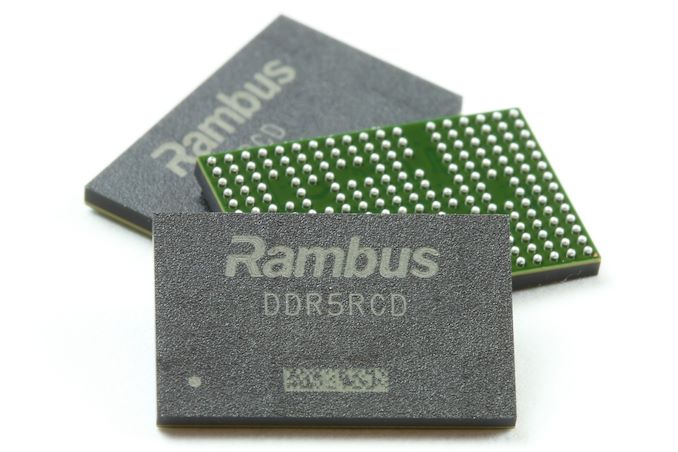
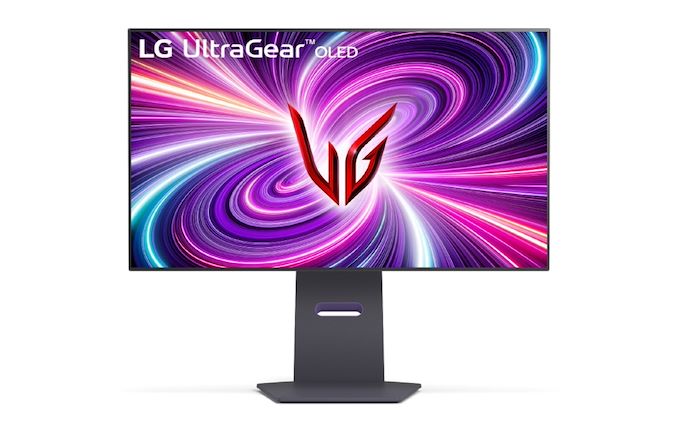



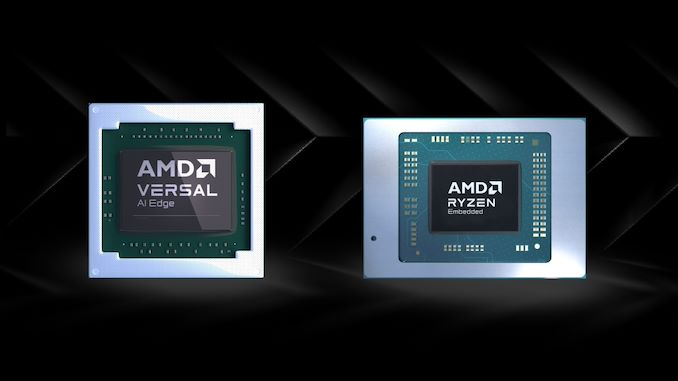
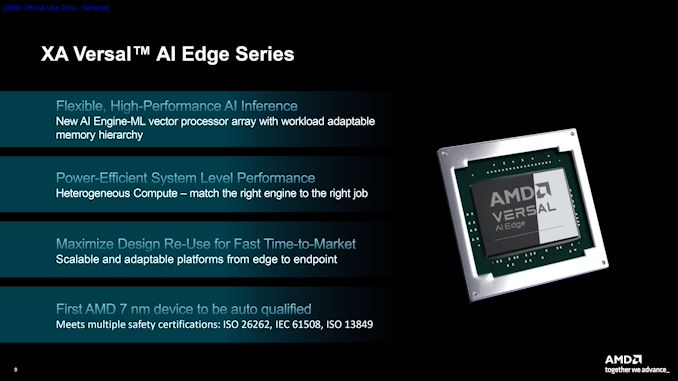

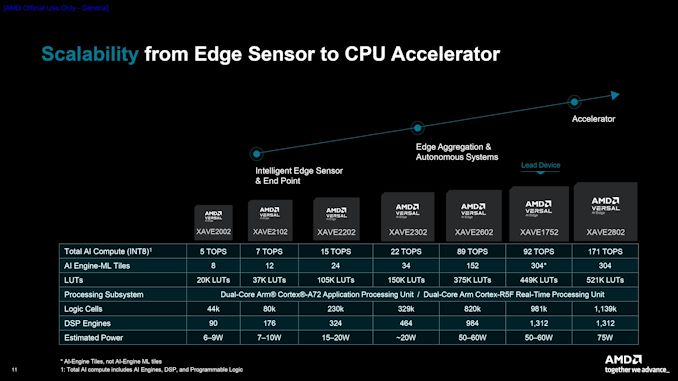
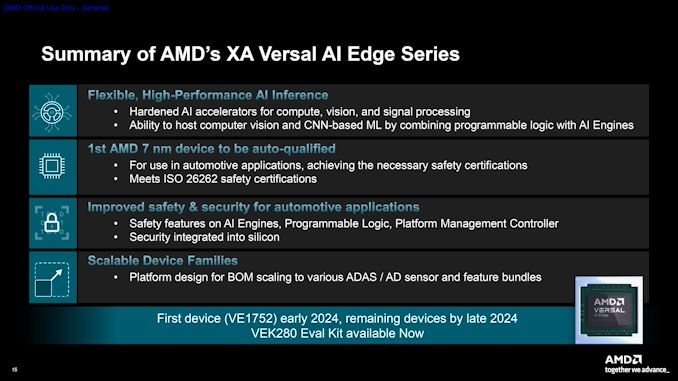
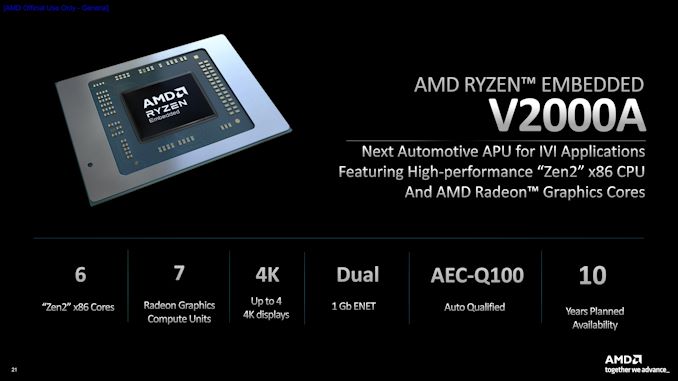

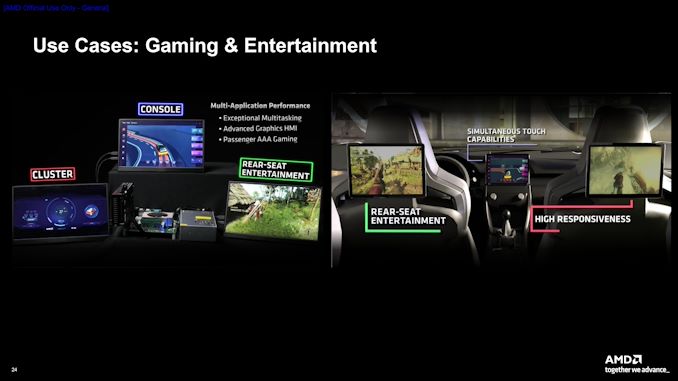

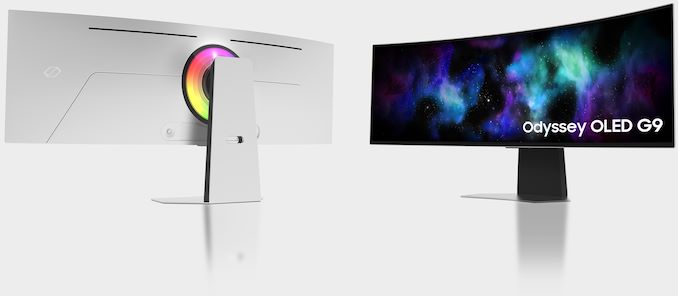
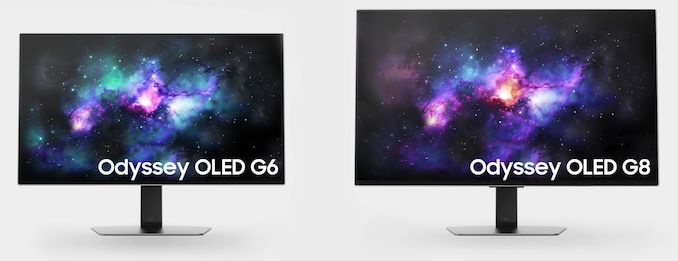

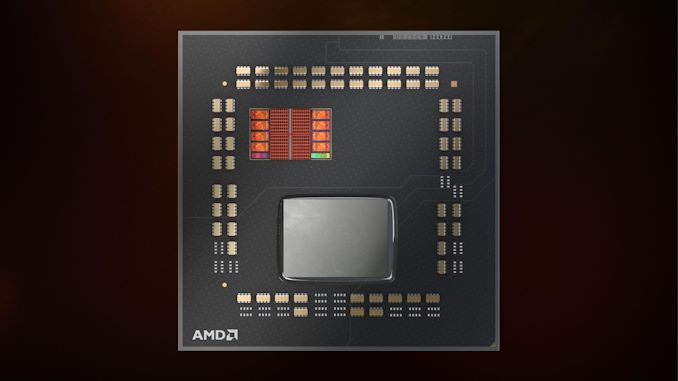


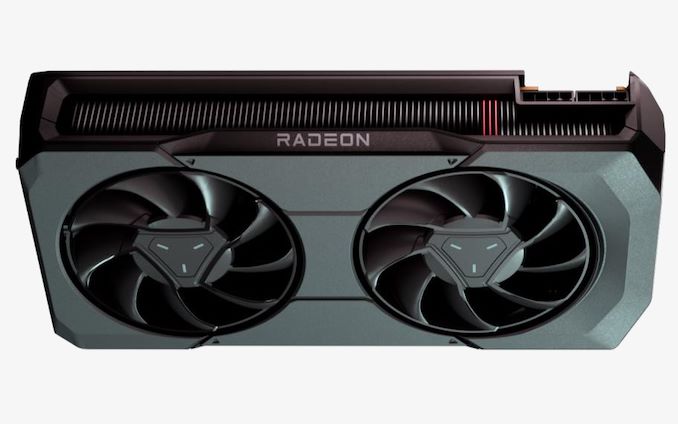

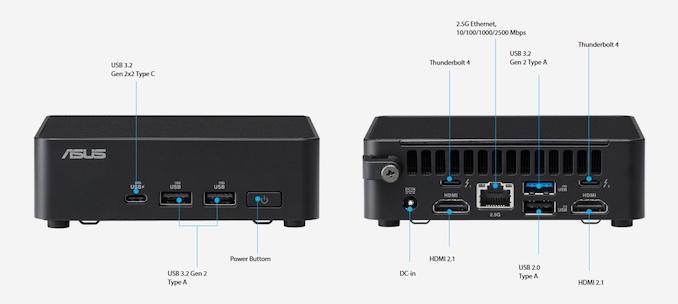
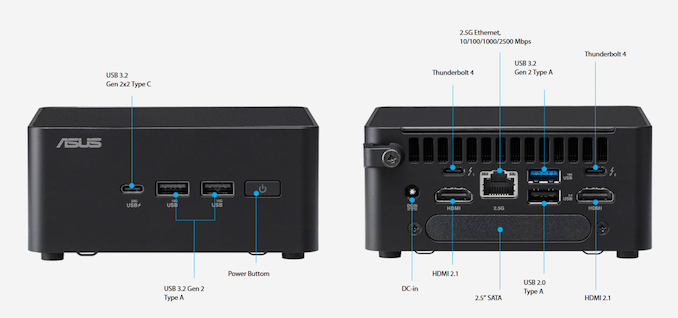
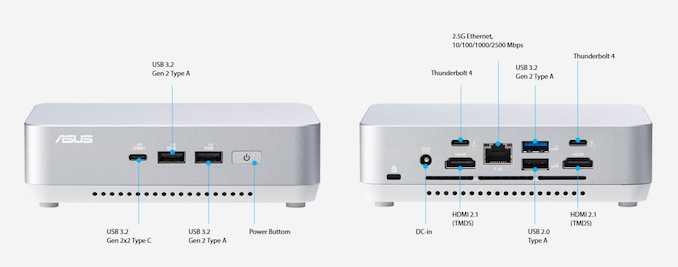
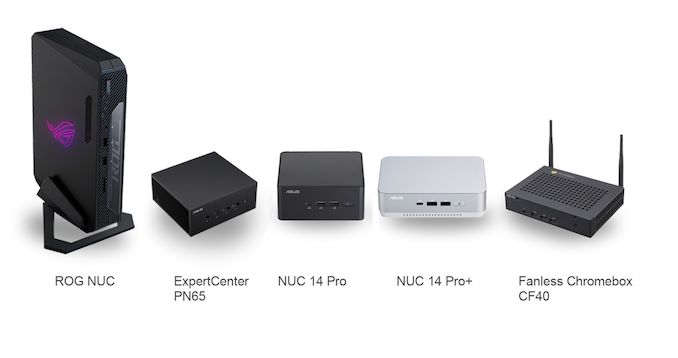
















Bookmarks